Belgium is home to several renowned artworks and museums that attract art enthusiasts from around the world. Here are five of the most popular paintings that you can see during your stay in Belgium.
“The Adoration of the Mystic Lamb” (Ghent Altarpiece) by Hubert and Jan van Eyck

Where: the St. Bavo’s Cathedral (Ghent)
“The Adoration of the Mystic Lamb,” also known as the Ghent Altarpiece, is a famous artwork created by two talented painters, Hubert and Jan van Eyck. You can see it in the St. Bavo’s Cathedral in Ghent. This artwork is like a big puzzle with 12 pieces. In the center, there’s a scene where people are worshiping a lamb, which represents Jesus. Angels, saints, and regular folks are all around.
One of the most striking aspects of the Ghent Altarpiece is its intricate symbolism and layered meaning. It’s not merely a religious artwork but a complex theological statement. The altarpiece explores themes of salvation, redemption, and the spiritual journey of humanity. The symbolism extends beyond the central panel to the entire composition, where each detail and character carries a profound significance. This masterpiece has captivated art enthusiasts and scholars for centuries, and its influence on art and religious thought is immeasurable.
4 Artworks by Peter Paul Rubens

Where: the Cathedral of Our Lady (Antwerp)
Three altarpieces “The Elevation of the Cross“, “The Assumption of the Virgin Mary“, , “The Descent from the Cross” and “The Resurrection of Christ” by Rubens are an awe-inspiring artworks that adorns the Cathedral of Our Lady in Antwerp. These magnificent paintings are a testament to Rubens’ mastery of Baroque art and is a prominent feature of this historic cathedral.
The Elevation of the Cross
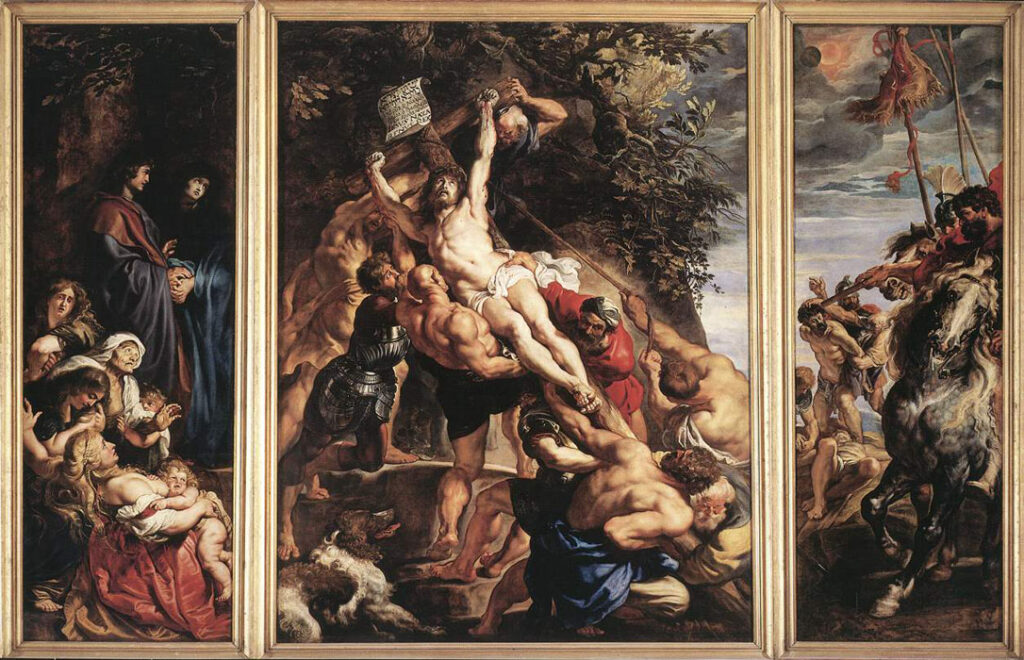
The Descent from the Cross
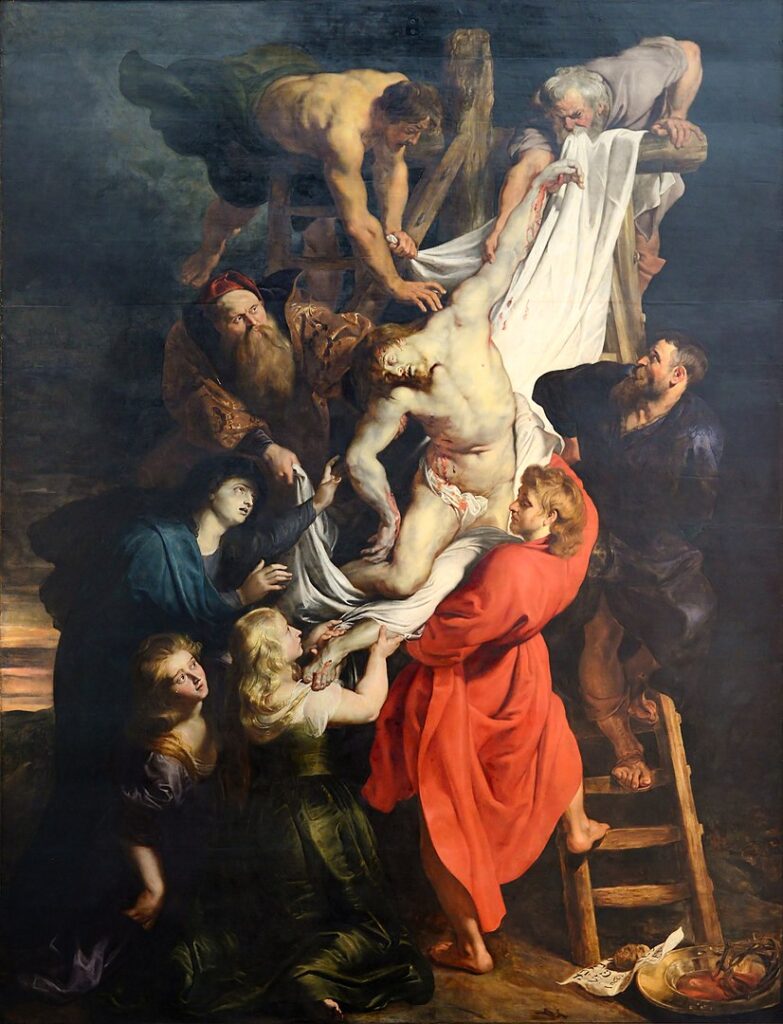
“The Fall of the Rebel Angels” by Pieter Bruegel the Elder
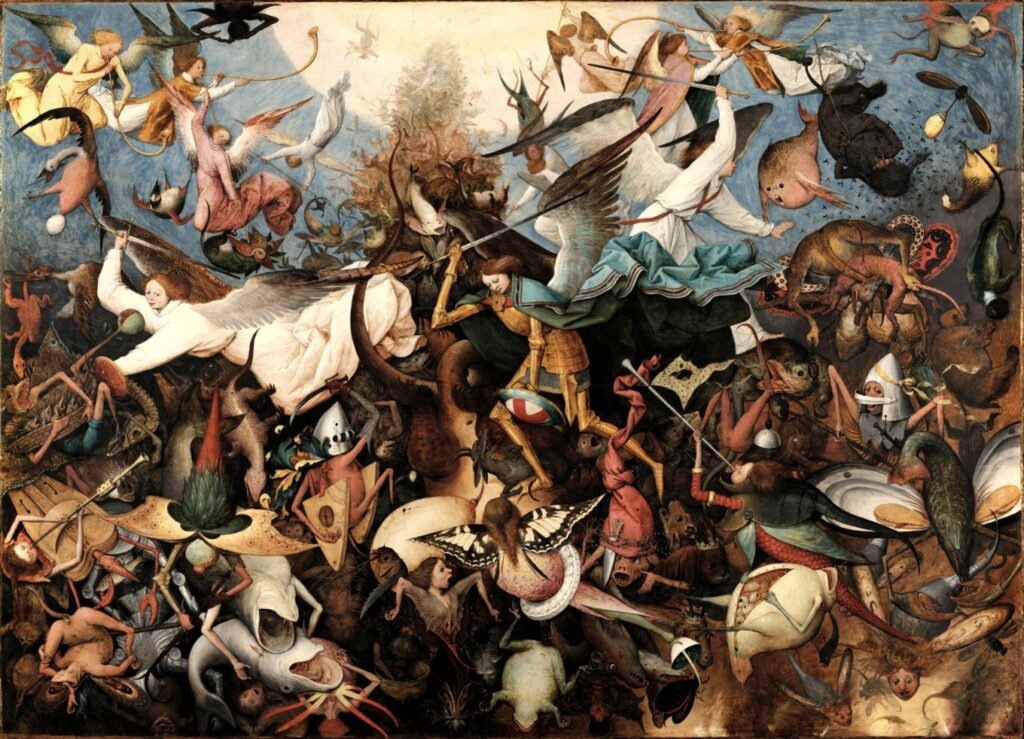
Where: the Royal Museum of Fine Arts (Brussels)
Pieter Bruegel the Elder‘s “The Fall of the Rebel Angels” is a mesmerizing and thought-provoking masterpiece that captures the biblical narrative of the angels’ rebellion against God. Painted with intricate detail and vivid imagination, this work immerses viewers in a chaotic and otherworldly scene. The canvas is filled with bizarre and grotesque creatures in various states of transformation, illustrating the fallen angels’ descent into darkness and chaos.
Bruegel’s meticulous attention to detail and his ability to blend fantastical elements with a touch of realism make this painting a captivating exploration of the eternal struggle between good and evil.
“The Garden of Earthly Delights” by Hieronymus Bosch
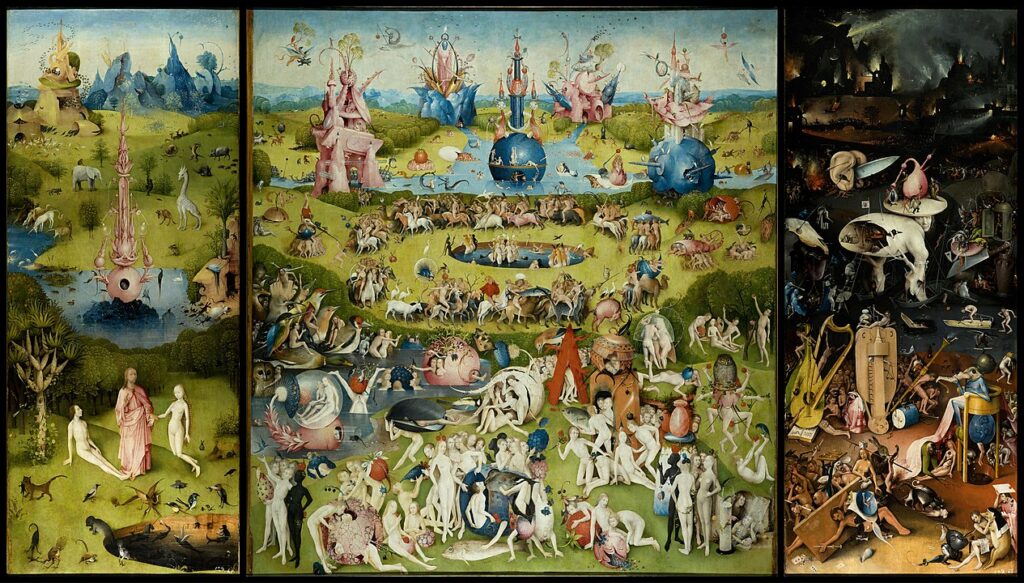
Where: the Royal Museum of Fine Arts (Brussels)
While the original triptych is in the Prado Museum in Madrid, a copy of this famous work can be seen in the Royal Museum of Fine Arts in Brussels. Bosch’s surreal and imaginative painting is a captivating display of his unique vision.
“The Garden of Earthly Delights” by Hieronymus Bosch is like a mysterious story told through a painting. It’s a giant artwork with three parts. The first part shows a beautiful world, like the Garden of Eden. In the middle, there’s a strange and colorful garden filled with weird creatures and people doing all sorts of things. It’s like a dream, but it’s also a bit strange and sometimes scary. In the last part, everything goes wrong, and it’s a scary place with fire and chaos.
Some think it’s about the choices people make in life, between good and bad. Others see it as a warning about the consequences of our actions. Whatever it means, it’s a painting that makes you think and wonder, and it’s still fascinating to people today.
“The Empire of Light” by René Magritte
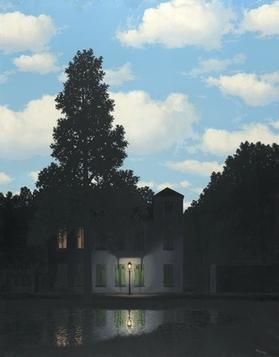
Where: the Magritte Museum (Brussels)
“The Empire of Light” is a famous painting by the Belgian surrealist artist René Magritte. In this artwork, you see a nighttime scene with a serene, suburban house surrounded by trees and a cobblestone street. What makes this painting intriguing is the way Magritte has combined two different times of day in one image. On the top half of the canvas, there’s a bright, daytime sky with fluffy white clouds and a blue sky, while the bottom half shows a dark, nighttime setting with a single streetlamp illuminating the scene. This juxtaposition of day and night creates a surreal and dreamlike atmosphere, challenging our sense of reality.
It’s worth noting that Magritte created several versions of “The Empire of Light,” each with slight variations. One of these versions can be seen at the Magritte Museum in Brussels. This painting, like many of Magritte’s works, invites viewers to question the nature of reality and our perception of it, making it a fascinating piece in the world of art.
“The Census at Bethlehem” by Pieter Bruegel the Elder
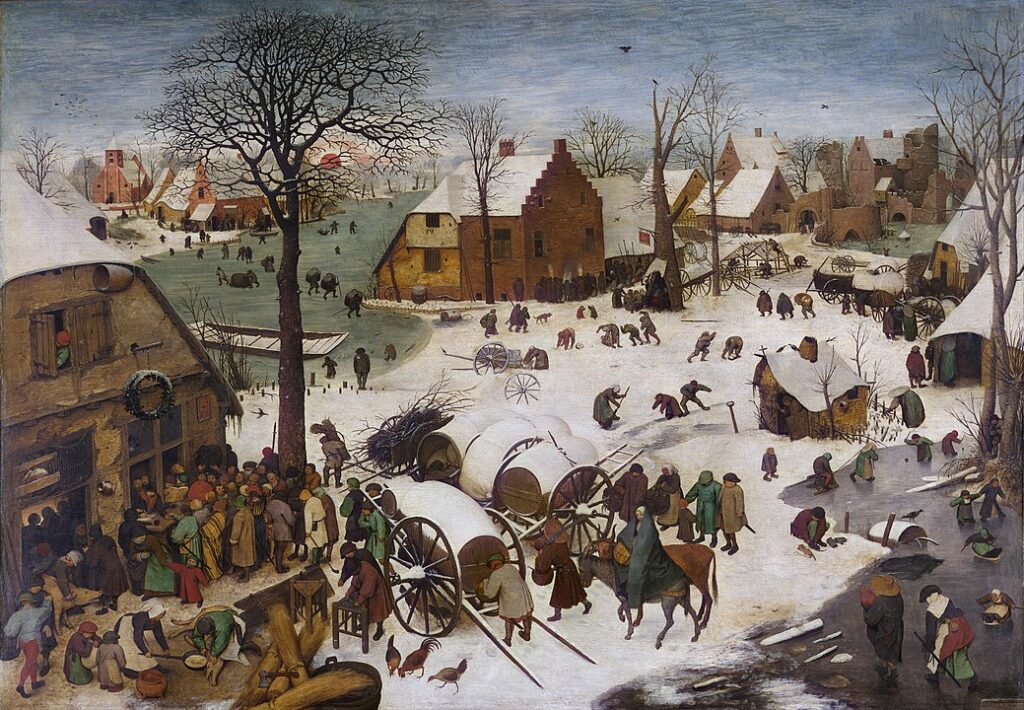
Where: the Royal Museum of Fine Arts (Brussels)
“The Census at Bethlehem” is a painting created by the Flemish Renaissance artist Pieter Bruegel the Elder in 1566. It’s now housed in the Royal Museums of Fine Arts of Belgium. This artwork is remarkable because it’s one of the earliest Western paintings to feature a snowy landscape.
The scene depicts Bethlehem as a Flemish (North Belgium) village during winter at sundown. People are seen going about their daily activities, with some gathered at a building on the left having their details recorded by a scribe. Notably, Joseph and the pregnant Virgin Mary are shown arriving on a donkey, even though this historical event is set in Jewish Bethlehem.
The painting is rich in detail, showing children playing on the ice, a pig being slaughtered, and various elements like a wheel and a man warning against leprosy. Bruegel, known for his unique approach, turns a biblical story into a contemporary scene, possibly critiquing bureaucratic methods or reflecting the political situation of his time.



